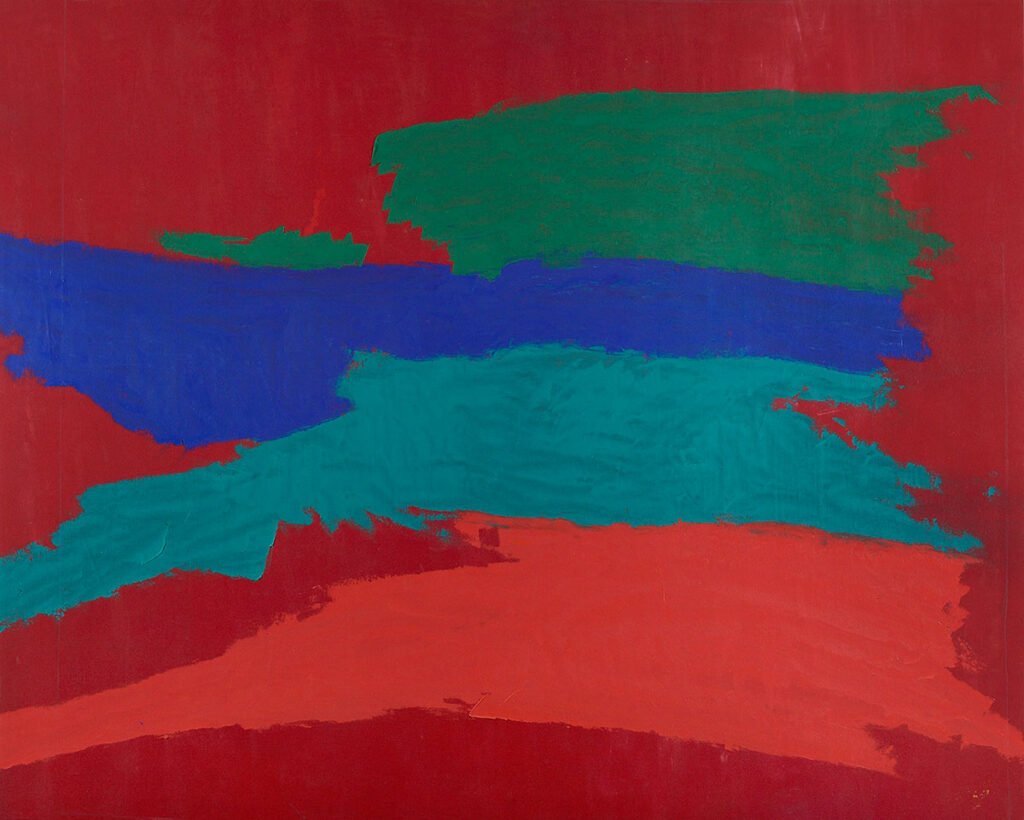Have you ever walked into a room and seen a painting you can’t help but be drawn to because of its use of color? You may have come across a piece of color field art. It brings to mind artists like Mark Rothko, whose works use broad areas of color to portray poignant social, political, and expressive messages.
While, to the non-discerning eye, these pieces may not look like high-end art, the reality is they’re wise investments for those looking for appreciating pieces. They are popular among seasoned collectors and ideal pieces for those new to the scene to start out with. Aside from the financial aspect, owning a color field painting can tie the color scheme of a room together. Characterized by bold colors, they can form the foundation of an interior design pallet.
This article will provide practical tips on making the best choices when adding color field artwork to your portfolio of pieces.
Understanding Color Field Painting
Color Field art is a style that emerged in the 1950s and 1960s. It is usually characterized by large swaths of a single color or simple, bold, block-like compositions. The central idea is to use color as a primary means of expression, creating an emotional response from the viewers depending on how they interpret the piece. Unlike other art forms, color field art focuses less on intricate details and more on being an emotional stimulant.
Some names will forever stand in the history of color field painting, such as Mark Rothko, famous for his large canvases, which were soft rectangular blocks that seemed to float. Another name of significance in color field painting is Barnett Newman, known for his ‘zips’, which were vertical lines that cut through expansive color fields.
Tips for Collectors
Collecting art is exciting for those looking into these kinds of investments. Here are some essential tips if you’re a collector looking to explore color field painting and wondering where to start.
● Research and Education
The first thing is to do some research on color field painting and key artists within the discipline. The more you know, the better decisions you’ll make. You can start by reading books like Irving Sandler’s “The Triumph of American Painting” or exploring catalogs from art museums or reputable galleries. You can also look up articles and documentaries on color field paintings. The best advice is to take advantage of every opportunity to learn. In the art world, the more knowledge you have the better your final decision.
● Understand Identifying Authentic Works
Because authenticity is absolutely crucial when sourcing and buying art, it’s best to work with reputable dealers and galleries to ensure you get a genuine piece. The professionals there have the expertise to verify artwork and give you documentation. The provenance shows the detail of the artwork’s history and previous ownership, which adds to security. Whenever in doubt, consult art experts to help determine an artwork’s authenticity.
● Assessing the Value
Several factors are involved in assessing the value of high-end art, such as color field painting. You need to check the artist’s reputation, the rarity of the piece, and its condition. Also, it would help if you stayed updated on market trends and recent auctions to understand the going rates for similar works.
● Building Relationships
In art, who you know can be as important as what you know. Network with other collectors and enthusiasts by joining art collector groups and associations. Attend art fairs, exhibitions, and auctions to stay connected and informed. These relationships can lead to insider tips, exclusive opportunities, and a deeper appreciation of the art you collect.
● Diversifying the Collection
While focusing on color field art is excellent, diversifying your collection can balance investment risks. Consider investing in works from other art movements like Abstract Expressionism or Minimalism. This variety enriches your collection and provides financial stability by spreading risk across different types of art disciplines.
● Care and Preservation
Proper care and maintenance are essential for maintaining your art’s value. Color field artworks can be sensitive to light, temperature, and humidity. Store and display them in controlled environments and seek professional services for advice and maintenance. You will also need to take out a robust insurance policy to protect your piece against loss or damage.
● Selling and Trading
Understanding the market is critical when it’s time to sell. Monitor trends and demand to choose the right moment. Working with reputable auction houses or private sales agents can help you navigate the process and get the best price for your artwork.
Conclusion
In art collecting, each piece you acquire is an investment in a piece of history and a source of ongoing inspiration and enjoyment.
Investing in color field artcan be rewarding and profitable when done right. With the proper research, relationships, and care, you can build a collection that brings joy and increases value.
